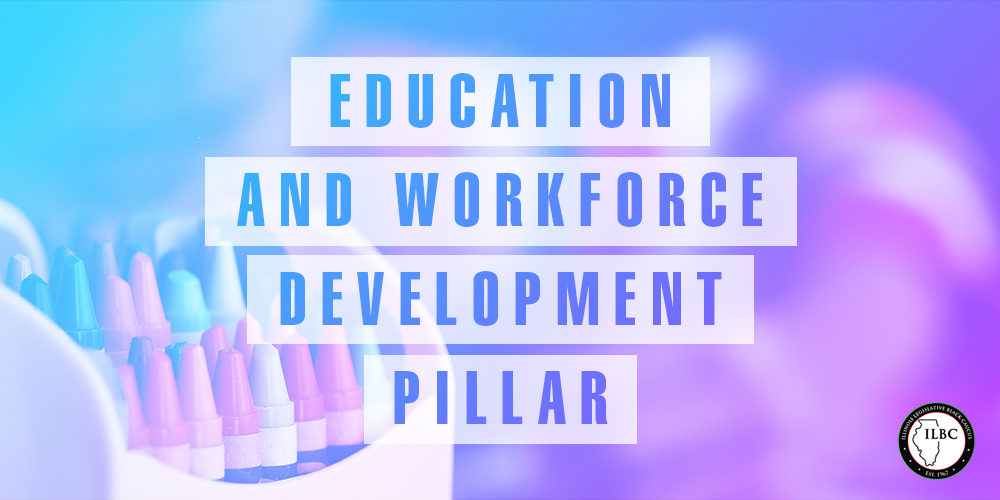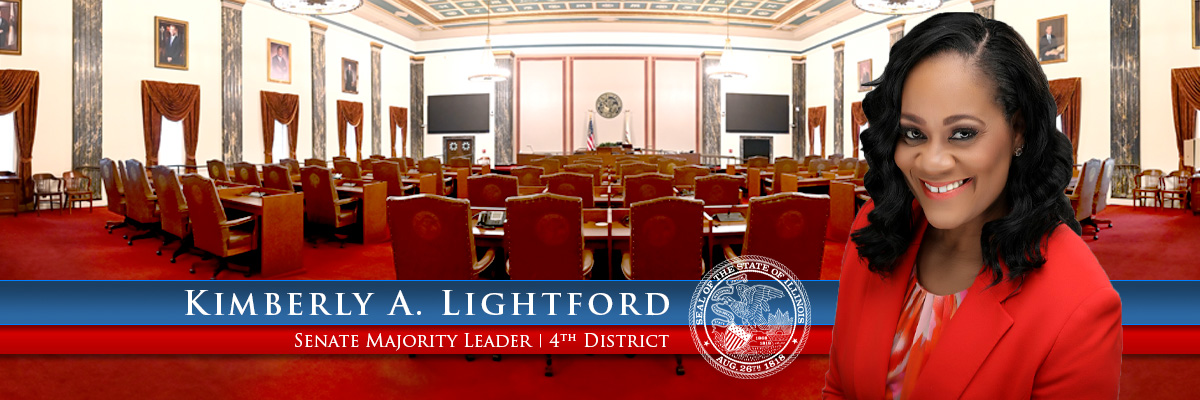

The education and workforce development pillar is meant to dismantle systemic racism within Illinois’ education system – from early childhood through adult learning.
It expands access to Early Childhood Intervention services, creates a uniform kindergarten readiness assessment, matches high school graduation requirements with basic entrance requirements at Illinois’ flagship public university, creates commissions to address how schools teach the history of marginalized groups and address students who have experienced trauma, strengthens university programs meant to help get more minority teachers in the classroom, and more.
Education and Workforce Development Pillar Fact Sheet (HB2170)
Sponsor: Majority Leader Kimberly A. Lightford (D-Maywood)
Early Childhood
- Article 10 - Allows children to continue to access Early Intervention services until the beginning of the school year after they turn 3.
- Article 5 - Codifies the Kindergarten Readiness Assessment.
- Article 40 - Requires the Department of Healthcare and Family Services to make recommendations on how to create a diagnostic system that would allow Medicaid to pay for some Early Intervention services.
- Article 15 - Expresses support for the recommendations of the Illinois Commission on Equitable Early Childhood Education and Care Funding.
- Article 35 - Urges the state to increase the availability of Infant/Early Childhood Mental Health Consultations.
K-12 Education
- Article 50 - Requires two years of laboratory science and a foreign language (or sign language) to graduate high school.
- Article 60 - Adds a one-year course with an intensive computer literacy focus to the required high school curriculum. High schools must also offer at least one elective computer science course.
- Article 65 - Requires schools to automatically enroll students in the next level of advanced coursework if they meet or exceed state standards in that subject matter – including Advanced Placement courses.
- Article 135 - Creates an Inclusive American History Commission to reform the Black history curriculum and curriculums for teaching about other minority groups.
- Article 25 - Creates a Whole Child Task Force to address trauma in children and create an equitable, inclusive, safe, and supportive environment for all children.
- Article 75 - Creates grant-funded Freedom Schools to expand teaching of Black history, the civil rights movement, civic engagement, and leadership.
Higher Education
- Article 100 - Creates English and math placement requirements at community colleges.
- Article 125 - Changes the matching requirement for AIM High scholarships. Allows schools with more than 49% Pell Grant recipients averaged over three years to pay a 20% match, while schools with less must pay a 60% match.
- Article 95 - Supports the Illinois Board of Higher Education’s efforts to identify more race conscious and equitable ways to fund higher education.
School Funding
- Article 85 - Requires the Professional Review Panel to review adequacy target calculations, racial equity, and whether the funding goals are sufficient.
Teacher Training
- Article 120 - Expands and reprioritizes distribution of Minority Teacher of Illinois Scholarships.
- Article 115 - Removes the GPA requirement for Alternative Educator Licensure.
- Article 45 - Urges the Department of Human Services to increase access to supports for teacher credential and degree attainment, with a focus to reducing barriers and increasing minority teacher representation.
- Article 155 - Establishes new definitions for National Board Certified Teachers.
- Article 130 - Urges IBHE and the Illinois Community College Board to create a Major Panel to identify courses that count toward an Education major.
COVID-19 Response
- Article 70 - Requires the P-20 Council to make COVID-19 recovery recommendations.
Other Provisions
- Article 20 - Creates a disaggregated uniform demographic data collection requirement.
- Article 150 - Creates a study to determine the feasibility of consolidating all workforce development programs under a single agency.



